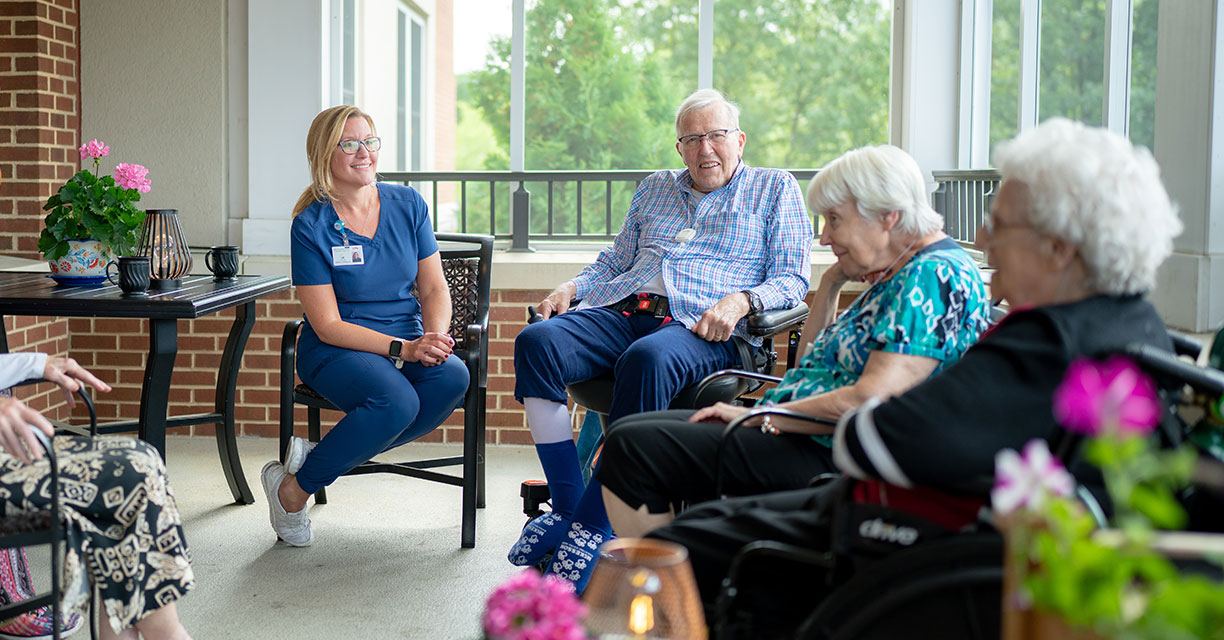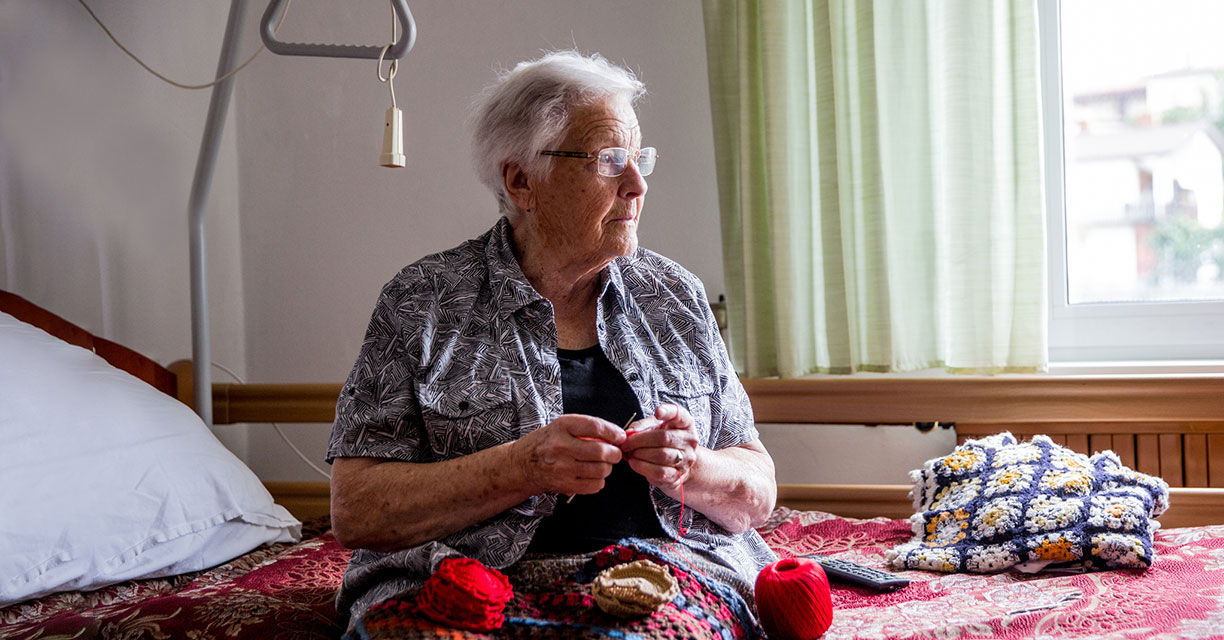By Playbook staff
Senior living refers to a range of service-enriched housing aimed at older adults who want specific service amenities, health care support, or help with activities of daily living (e.g., dressing). Many forms of senior living, such as assisted living, evolved to offer an alternative to nursing homes — to provide a safe version of home that prioritizes hospitality, comfort, and independence over the constant supervision and medical care of a 24-hour facility. Examples of senior living include independent and assisted living. The services offered by senior-living providers vary but can include social activities, prepared meals, transportation, housekeeping, and medication management assistance.
Older adults who live in these settings tend to be among those with the highest levels of chronic illness, functional impairment, and health care utilization. As accountable care organizations and managed care organizations develop value-based strategies for managing a complex care population, they should get to know the organizations in their market that offer housing and services aimed at this population.
What are the range of senior living options?
- Senior Apartments are age-restricted housing in the community. Senior apartments are ideal for adults who can live independently without help with activities of daily living (e.g., toileting, grooming).
- Cohousing allows for multiple generations to independently own space but share certain living spaces and household chores. Cohousing is ideal for older adults seeking to create intergenerational connections and to share the work associated with activities of daily living (e.g., shopping, cooking).
- Active Adult Communities are age-restricted retirement communities for adults over 55 who are still healthy and can live independently without assistance with activities of daily living. Active Adult Communities allow older adults to live in an environment with people of their own age cohort.
- Independent Living is a residential setting for seniors who require minimal assistance. Independent living allows for individuals to remain independent, with access to services and assistance when needed. Hospitality services (e.g., housekeeping) and meals may be offered in this setting.
- Assisted Living Communities or Assisted Living Facilities provide a mix of housing, personal care, and health care services to support older adults so that they can continue to maximize their independence. Typically, 24-hour security and assistance are available in this setting as well as some health care assistance (e.g., medication reminders).
- Continuing Care Retirement Communities (CCRCs) offer different levels of service in the same location. Many CCRCs offer independent living, assisted living, skilled nursing care, and memory support on the same campus. CCRCs enable older adults to remain in the same community as their health care needs and functioning change.
- Subsidized/Affordable Senior Housing refers to apartment communities that offer reasonably priced rents to lower-income older adults. Eligibility is based on age and income. The federal government is the primary funder of these affordable communities. LeadingAge, the leading advocate for affordable senior housing, provides more information.
- Respite Care provides short-term (e.g., an afternoon, a week) relief for primary caregivers. Care can be provided at home or in a facility. ARCH National Respite Locator service can help find services by community.
For more information on senior living, visit the National Institute on Aging, American Seniors Housing Association, and LeadingAge.
Who pays for senior living?
Of the 7 million people whose needs are appropriate for some type of service-enriched housing, only about 1 million live in senior living.[1] One of the reasons so few people with high needs select senior living is cost, along with the fact that very few have private long-term care insurance to pay for it.
According to the Genworth Cost of Care Survey 2018, the median annual cost of a private bedroom in an assisted living facility is $48,000, or about $4,000 a month. The cost of senior living varies by location (e.g., $34,128 in Missouri, $56,400 in Connecticut, $111,195 in Washington, DC).
Medicare, the primary payer of health care for older adults, does not cover assisted living. It covers only short-term health care costs such as inpatient hospital care and physician services.
Medicaid, the health care program for individuals with limited income and resources and the leading government assistance program for long-term care, is administered cooperatively by state and federal governments. States having significant discretion over what Medicaid covers. While Medicaid will not pay for the “room and board” portion of senior living fees, it will cover the portion associated with enriched services. Forty-four states provide reimbursement for assisted living through Medicaid programs; however, coverage varies significantly by state.
The lack of insurance and the limits of Medicare and Medicaid mean that most people finance their senior living through personal savings, housing equity, or family out-of-pocket contributions.
How does senior living occupancy vary across the country?
The occupancy rate for seniors’ housing (both independent living and assisted living) was 88.1 percent in the first quarter of 2019, according to the National Investment Center (NIC), the nonprofit organization that provides data and analytics on the sector. The average occupancy rate for independent living is higher, at 90.4 percent, while the average occupancy rate for assisted living properties is 85.5 percent.
While senior housing occupancy is stable nationally, occupancy varies by market. For example, NIC data show that the highest occupancy rates occurred in San Jose, CA (94.4 percent) and in Baltimore, MD (92.1 percent) while the lowest occupancy rates occurred in Houston, TX 81.4 percent) and San Antonio, TX (82 percent).
Who are the providers?
The largest for-profit senior living providers in 2018, according to Argentum, include Brookdale Senior Living, Holiday Retirement, Life Care Services, Five Star Senior Living, and Sunrise Senior Living.
The largest nonprofit multi-site senior living organizations, according to the annual LeadingAge Ziegler list, include National Senior Campuses, the Evangelical Lutheran Good Samaritan Society, Acts Retirement Services, Presbyterian Homes and Services, and Covenant Retirement Communities.
How can you find the providers in your state?
The United States Administration on Aging created the Eldercare Locator in 1991 as a public service to help connect families with options for senior living for their loved ones. A local resource for finding providers in your state is the Area Agency on Aging in your local community.
Editor’s note: Now that you have the 101 on Senior Living, keep an eye out for an upcoming companion piece that describes opportunities for ACOs and MCOs to develop strategies and partnership to manage their complex care populations.



